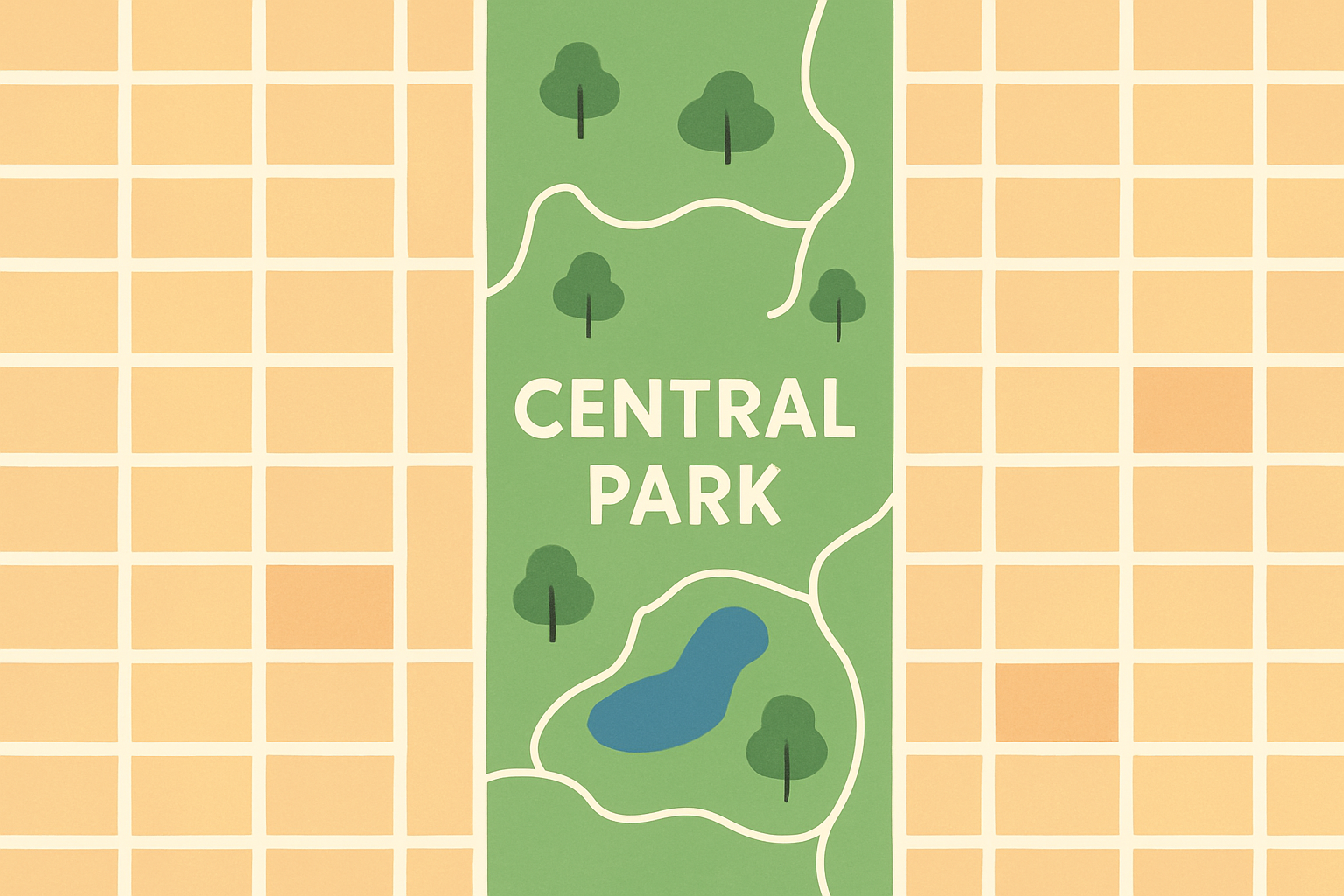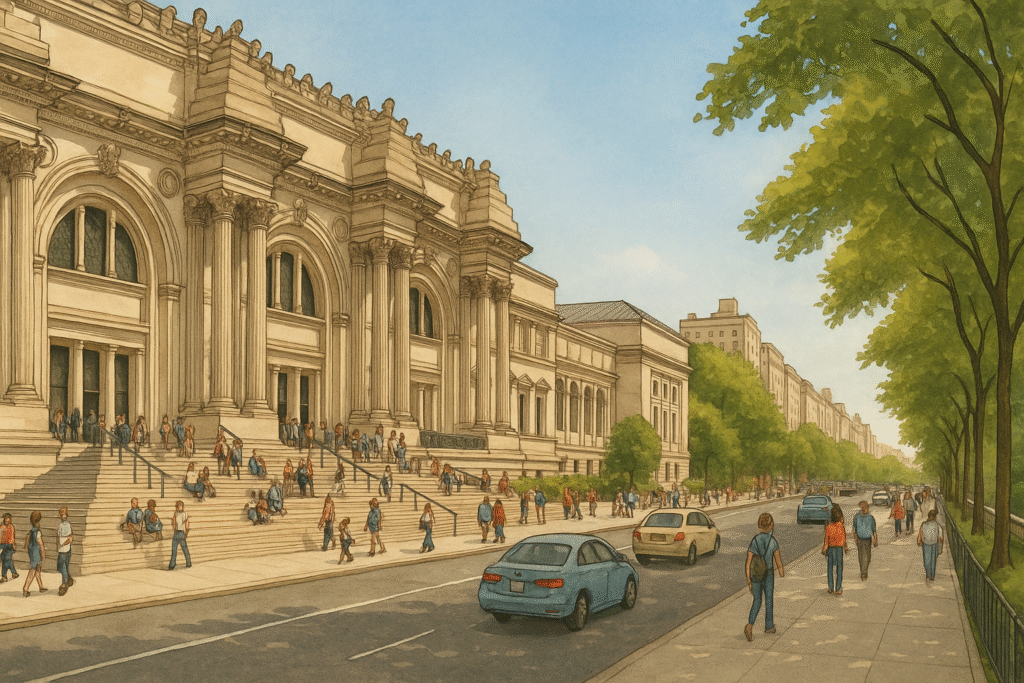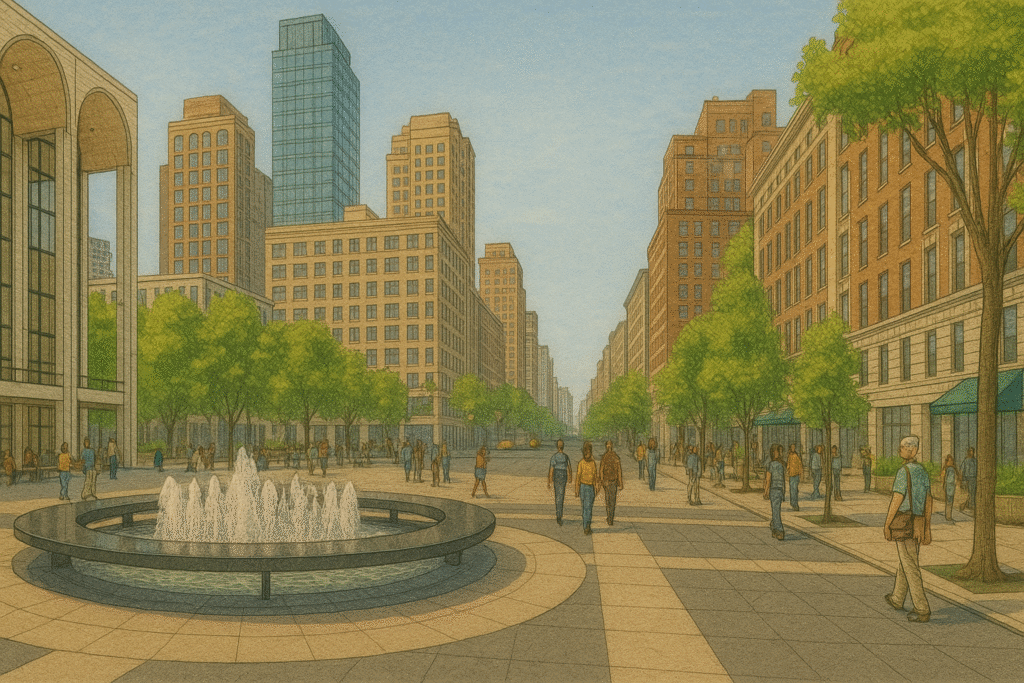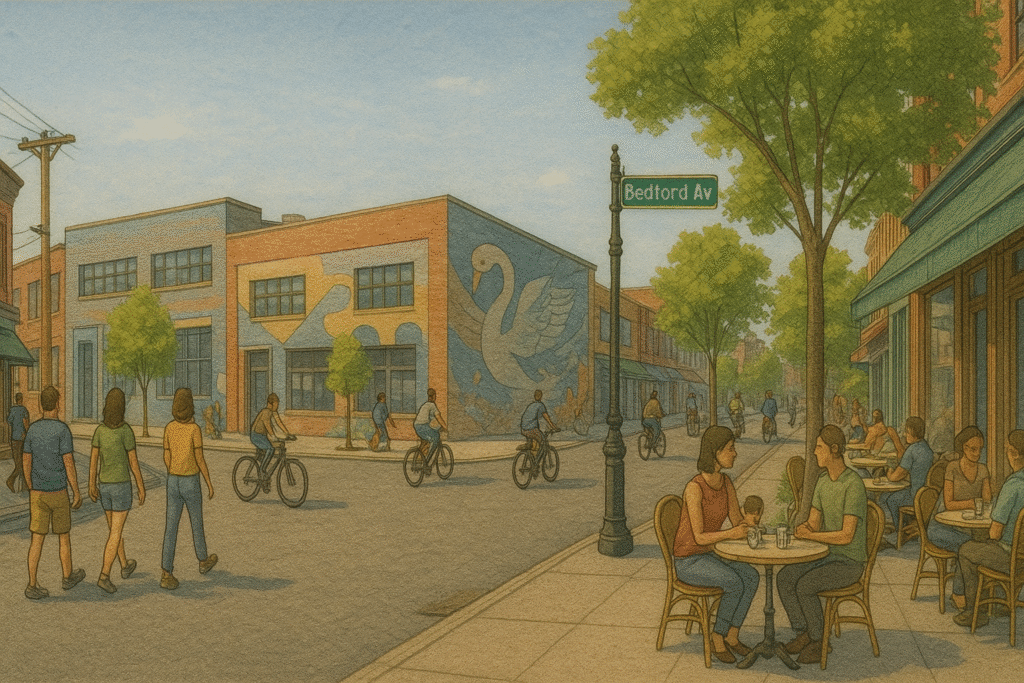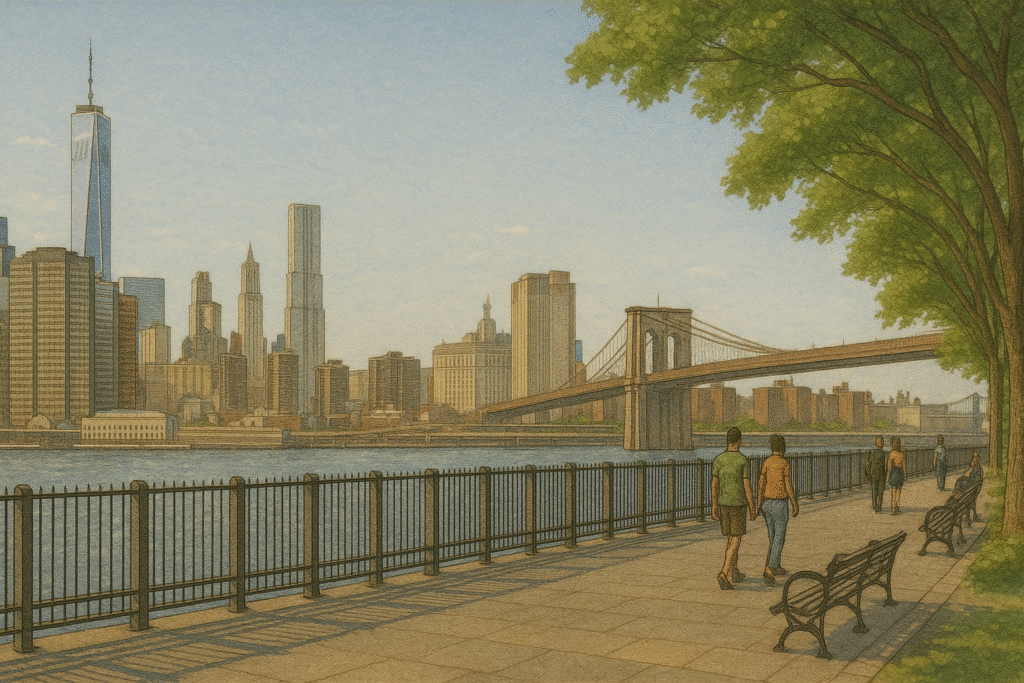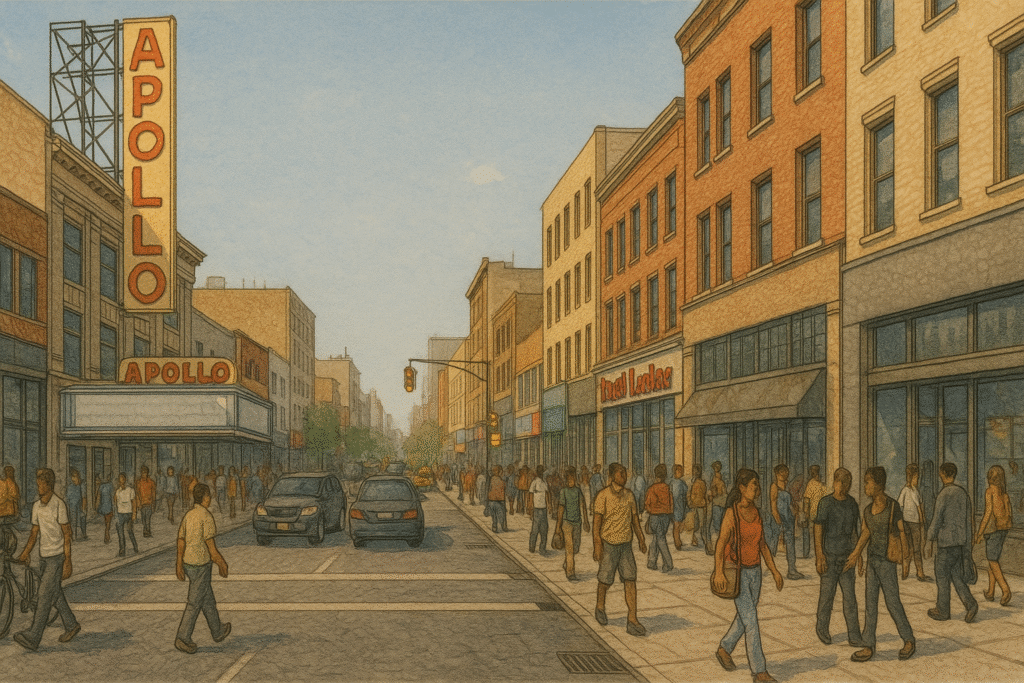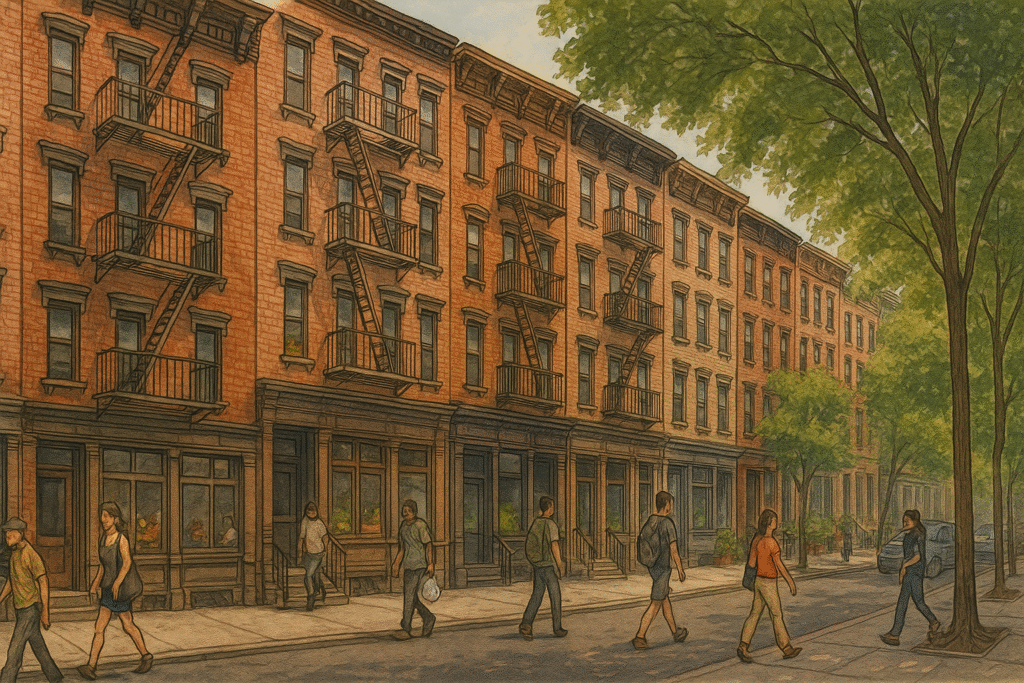Central Park is more than a green oasis amid the architecture of Manhattan — it is one of the most thoughtfully designed public spaces in the world. Conceived in the mid-19th century by Frederick Law Olmsted and Calvert Vaux, the park was intended as a democratic refuge, open to all and shaped by natural beauty, cultural life, and recreational freedom.
But Central Park is not one singular experience. It is a series of evolving landscapes — wild and rugged in some areas, formal and manicured in others. Stretching over 843 acres, it moves through dense woodlands, wide-open lawns, tranquil water bodies, historic landmarks, and bustling public hubs.
This guide offers a comprehensive look at every major section of Central Park — from its quiet northern reaches and wooded ravines to the bustling promenades and iconic bridges of the south. Whether you’re visiting for the first time or returning for deeper discovery, each part of the park holds its own identity, story, and purpose.
North End (Above 96th Street)
Harlem Meer
Situated in the northeast corner (110th Street and Fifth Avenue), the Harlem Meer is a quiet lake fringed with willows and walking paths. It is a favorite among anglers for catch-and-release fishing. The Charles A. Dana Discovery Center, nearby, offers educational programs and community events. The Meer is framed by dramatic rock formations and is bordered by lush plantings, making it both picturesque and tranquil.
The North Woods and The Ravine
This area is the park’s most naturalistic zone. Inspired by the Adirondack Mountains, the North Woods are filled with towering oaks and winding trails. The Ravine runs through the center, with a stream, rustic bridges, and small waterfalls. It’s an immersive woodland experience, ideal for birdwatchers, photographers, and anyone seeking solitude.
Conservatory Garden
Located at Fifth Avenue and 105th Street, this is the park’s only formal garden. Divided into three sections—French, Italian, and English—the garden features manicured hedges, fountains, wisteria pergolas, and seasonal floral displays. It is especially popular for weddings and quiet reflection.
Fort Clinton and Fort Fish
These two elevated sites are remnants of military fortifications from the War of 1812. Fort Clinton, above Harlem Meer, and Fort Fish, a bit further south, offer historical markers and open lawns. They once served as strategic defense points for the city.
The Loch and Huddlestone Arch
The Loch is a narrow waterway that flows through the Ravine. It leads visitors past cascades, mossy trails, and through the Huddlestone Arch—an impressive bridge built entirely without mortar. The arch is notable for its weight-bearing capacity and rustic design.
Mid-Park (72nd to 96th Street)
The Jacqueline Kennedy Onassis Reservoir
The Reservoir, spanning 86 acres, is one of the most iconic features in Central Park. Encircled by a 1.58-mile running track, it offers sweeping skyline views and is frequented by joggers and birdwatchers. Cherry blossoms line parts of the path in spring.
The Great Hill
Located near 106th Street, this open space is one of the highest points in the park. It features sloped lawns surrounded by mature trees and is often used for picnics, informal sports, and performances. It is less known than the Great Lawn, offering a more relaxed setting.
The Great Lawn
Situated between 79th and 85th Streets, the Great Lawn is a massive open space often used for recreation, sunbathing, and concerts, including the New York Philharmonic’s annual summer performance. It is surrounded by ball fields and shaded picnic spots.
The Ramble
A 36-acre forested labyrinth of twisting trails, small bridges, and hidden glades. The Ramble is one of the park’s wildest landscapes, favored by birdwatchers and those seeking a retreat into nature. Designed to feel like a rural escape, it is intentionally irregular in layout.
Belvedere Castle
Perched atop Vista Rock, Belvedere Castle offers panoramic views of the park and houses a visitor center and weather station. Below it lies Turtle Pond, a habitat for five species of turtles and home to various birds and aquatic plants.
Shakespeare Garden
Located near Belvedere Castle, this English-style garden features flowers and plants mentioned in Shakespeare’s plays. It includes winding paths, stone benches, and bronze plaques with corresponding quotes. In spring and summer, it is a colorful and aromatic retreat.
South End (Below 72nd Street)
Bethesda Terrace and Fountain
At the heart of Central Park’s formal design, Bethesda Terrace is flanked by grand staircases, the Arcade with intricate ceiling tilework, and the Bethesda Fountain, topped by the Angel of the Waters statue. This area connects the Mall to the Lake and is a frequent site for gatherings and performances.
The Mall and Literary Walk
A straight, wide promenade lined by towering American elm trees. At the southern end is Literary Walk, featuring statues of literary figures such as William Shakespeare and Robert Burns. It is a favored spot for street artists and musicians.
The Lake and Bow Bridge
The Lake offers rowboat rentals and picturesque views of wooded shorelines. Bow Bridge, an elegant cast-iron structure, spans the lake and is one of the most photographed spots in the park. The area is ideal for romantic walks and serene boat rides.
The Pond and Gapstow Bridge
Close to the southeast entrance, the Pond is an intimate water feature ringed by rocks and plantings. Gapstow Bridge, with its rustic stone arch, offers views of the Midtown skyline reflected in the water—especially beautiful in fall and winter.
Central Park Zoo and Tisch Children’s Zoo
Located just north of the Pond, the Zoo features a range of animals, from snow leopards to sea lions, and includes the Tisch Children’s Zoo for younger visitors. It is one of the park’s most family-friendly destinations.
Wollman Rink
South of the Zoo, this rink transforms seasonally from an ice-skating arena in winter to an amusement zone or event space in summer. It is surrounded by the skyline of Midtown and offers a blend of leisure and iconic New York imagery.
To walk through Central Park is to move through a carefully orchestrated mosaic of space and sensation. Its design was never meant to be static — instead, it unfolds gradually, offering discovery through contrast: wooded isolation beside architectural grandeur, curated gardens alongside untamed trails, and quiet reflection just steps from city clamor.
Every section of the park tells a different story, shaped by its terrain, history, and the countless people who pass through. Whether you’re here to run the Reservoir, picnic on the Great Lawn, watch turtles at Turtle Pond, or simply lose yourself in the Ramble, Central Park remains endlessly new — a living testament to what cities can offer when they preserve space not just for nature, but for imagination, memory, and pause.
However you choose to explore it, Central Park always meets you where you are — and always has something waiting just ahead.
Read Next:

The Street Sign
The Street Sign points the way to where things are — the parks, restaurants, museums, and everything else. These guides are built to save you time and energy. Need a plan for an NYC outing? Follow The Street Sign.
